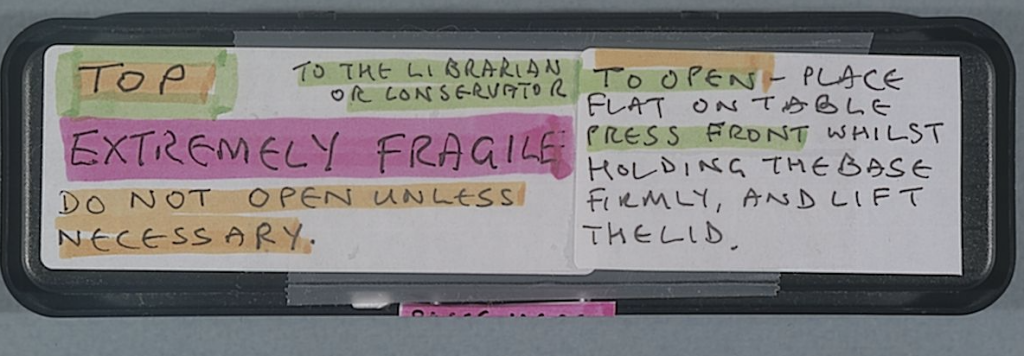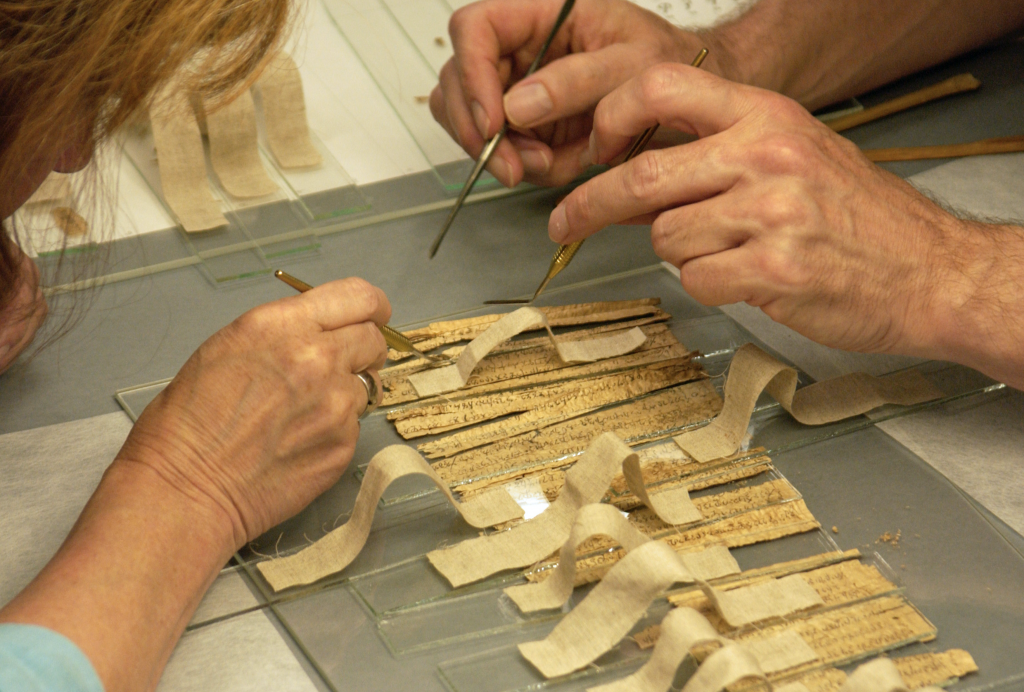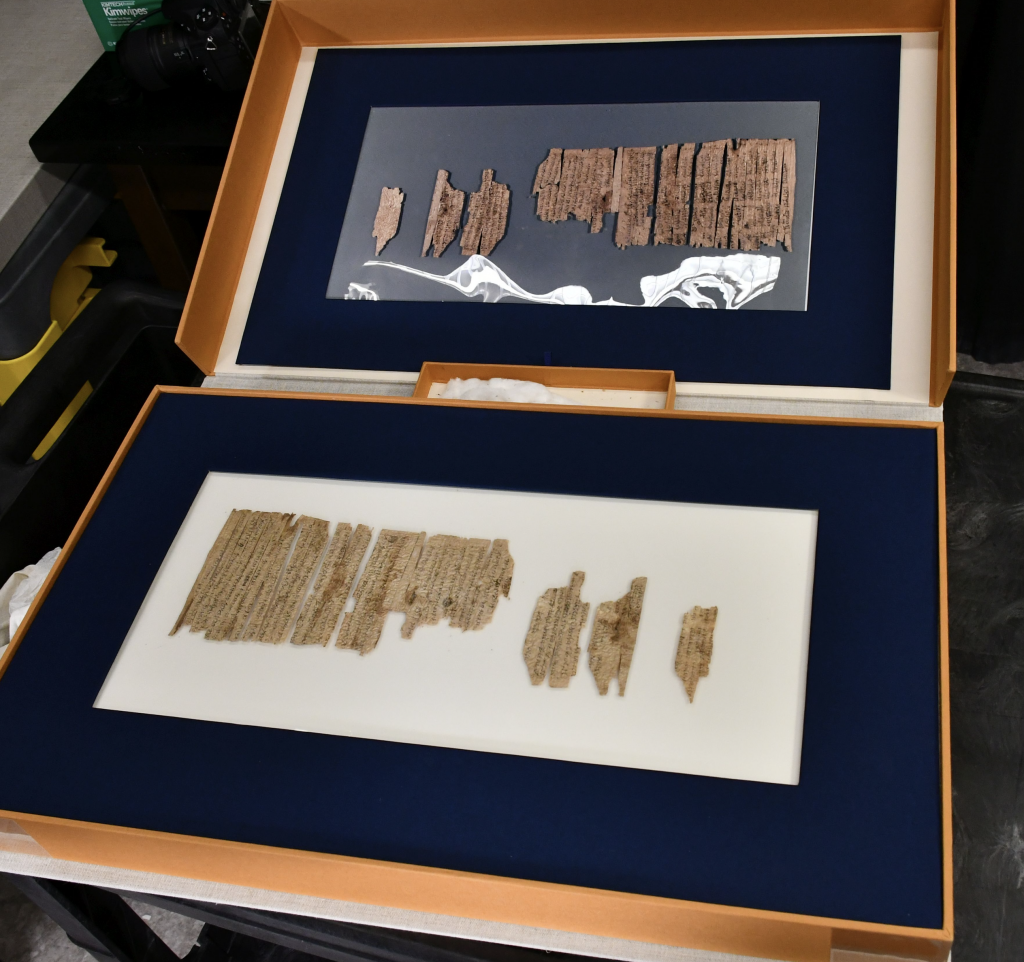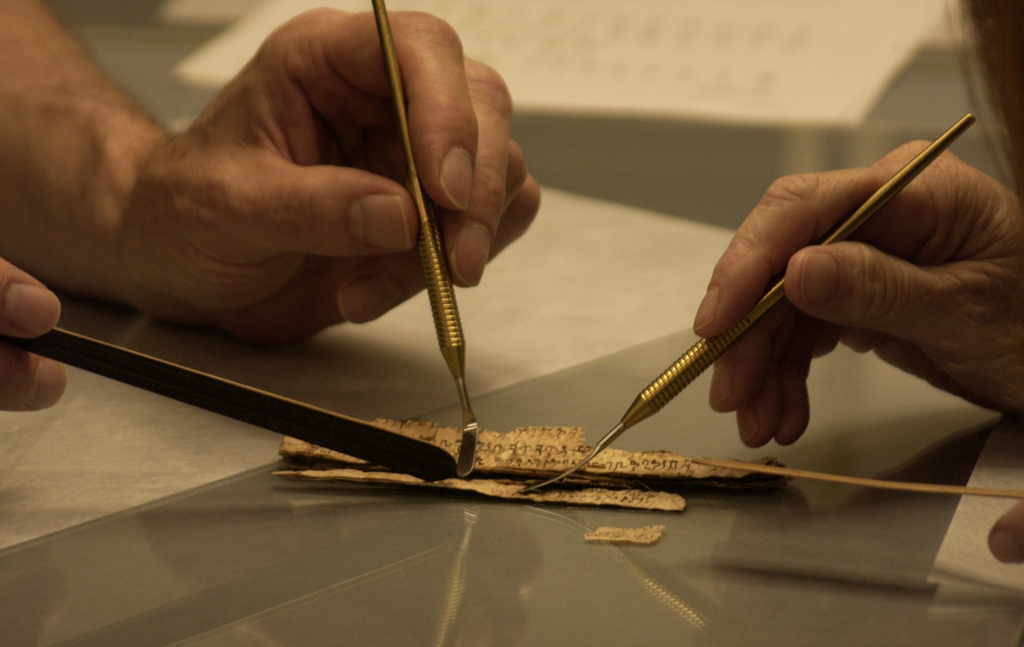Preservationists at work on the Gandhara scroll.
The ancient scroll arrived at the Library of Congress in a decidedly unassuming way: encased in a Parker Pen box. Inside lay one of the oldest Buddhist manuscripts known to the world, radiocarbon dated to between the first century B.C to the first century A.D.
For years, the scroll resided in the Library’s climate-controlled “top treasures” vault, rarely viewed because of its fragility. This year, the Library redigitized the piece and placed it online, offering scholars and Buddhist communities worldwide access to a little-known part of Buddhist history.
The scroll originates from Gandhara, an early Buddhist center located in what is now the northern border areas of Afghanistan and Pakistan. A group of materials buried high in the arid mountains was unearthed there in the 1990s, and the Library acquired this birch-bark scroll from the collection in 2003. It is the oldest holding in the Library’s Asian Division.

The pen box that held the scroll during shipping.
“This is a rare, unique item because it is very old, No. 1, and, No. 2, it does bring us, historically speaking, relatively close to the lifetime of the Buddha,” said Jonathan Loar, the division’s South Asia specialist. “It’s also one of the oldest among the couple hundred other Gandharan manuscripts known to scholars, so even within its own unique collection it stands out.”
The scroll tells the story of buddhas who came before and after Siddhartha Gautama — the sage who reached enlightenment under a Bodhi tree in eastern India in the sixth or fifth century B.C. and who became known as the Buddha. The narrative is in the first person: A scribe recounts the direct teaching of the Buddha regarding his divine lineage.
The scroll presented the Library a serious conservation challenge, even for its expert staff. “It was the most fragile thing I’ve ever worked on,” said Holly Krueger, who recently retired as head of paper conservation. “It was completely unique, unlike anything I’ve ever encountered.”
To assist with the delicate work of unrolling the scroll, the Library obtained the assistance of the British Library and its chief conservator, Mark Barnard, which had successfully unrolled some 30 related scrolls. To prepare, Krueger practiced unrolling a dessicated cigar — the closest material Barnard had found to the Gandhara scrolls, though not nearly as fragile. Her team crafted special tools, including bamboo implements and glass weights to keep the scroll down. Then, for three days in advance, it was gently humidified.

Piecing the scroll together.
Krueger and Barnard worked in an area of the conservation lab with the fewest air currents — the slightest movement could cause pieces to dislodge. The process took four hours of painstaking, but ultimately successful, work. Afterward, the scroll was encapsulated between two pieces of glass, and their edges sealed. Individual fragments were placed between separate pieces of glass, and the scroll was then imaged. Earlier this year, the Conservation Division redigitized the scroll and its fragments using advanced ultraviolet and infrared imaging.
The scroll today is considered one of the world’s best-preserved examples of a Gandharan scroll. It lacks a title, a beginning and an end but retains about 75 to 80 percent of the original text — much better, experts say, than the average Gandharan scroll.
In the scholarly and Buddhist communities, Loar said, the availability of Gandharan scrolls for study sheds new light on the earliest Buddhist literature and “deepens and diversifies what we currently know about the religion’s formative history.”

The scroll, unrolled and preserved.
Subscribe to the blog— it’s free! — and the largest library in world history will send cool stories straight to your inbox















